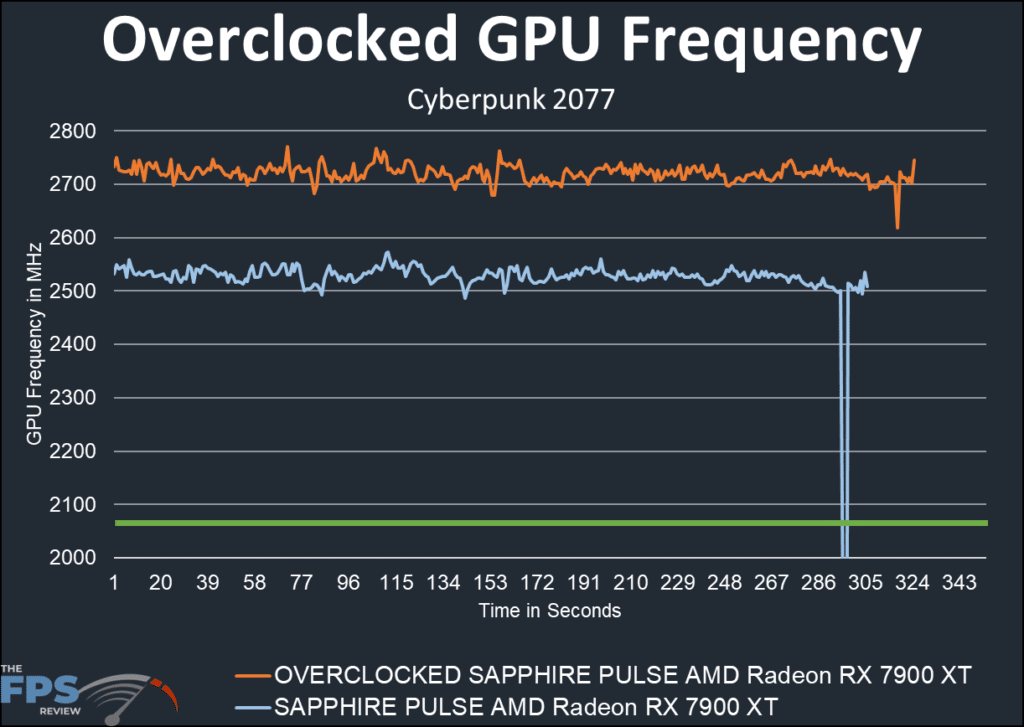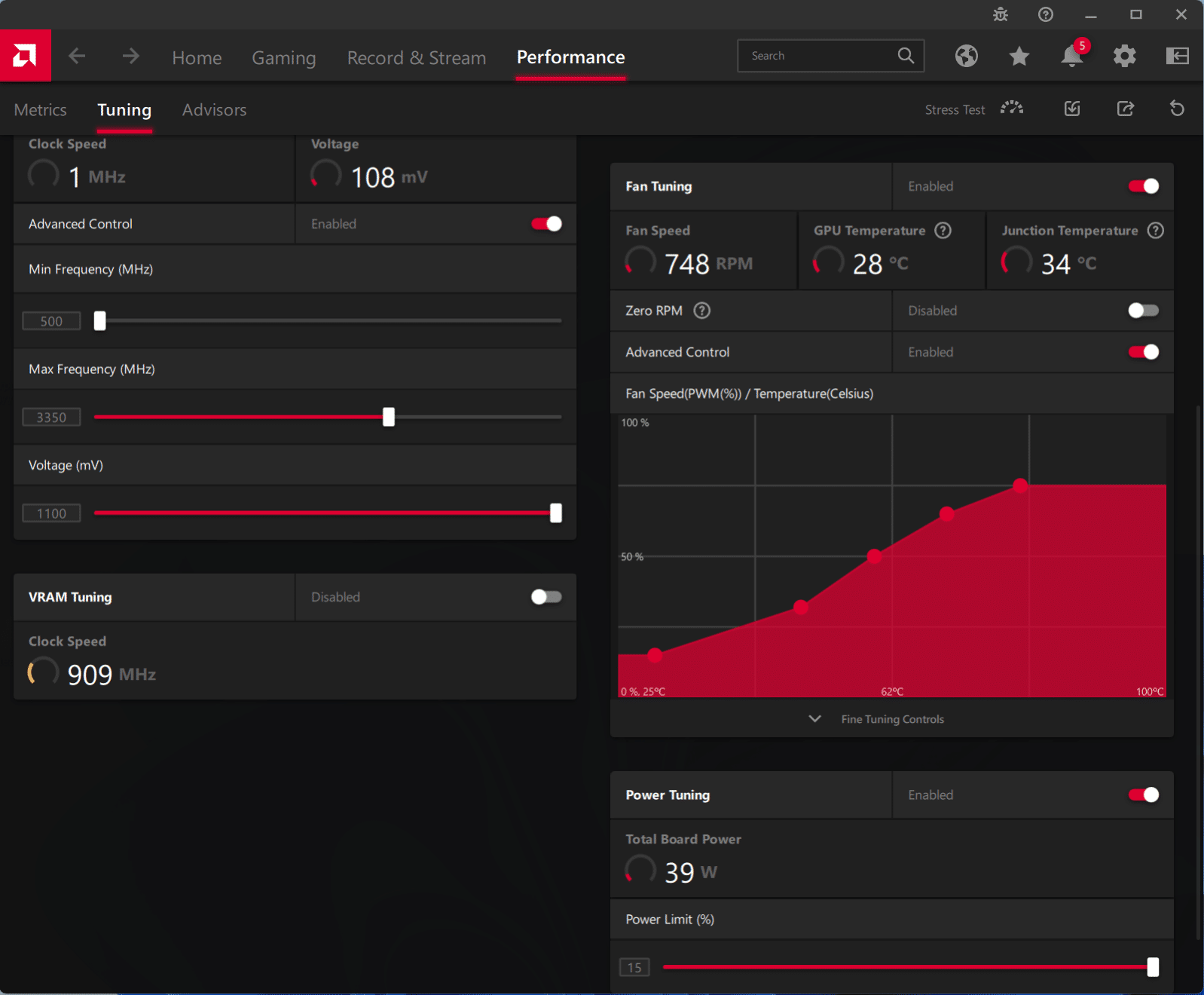Overclocking the SAPPHIRE PULSE AMD Radeon RX 7900 XT
Prior to overclocking, we will determine the base GPU clock speed. Both NVIDIA and AMD have dynamic base speeds, both have a “Boost” speed. (GPU Boost or Boost Clock, depending on the brand.) Generally, either brand’s card will exceed the “Boost” dynamically. To determine the “baseline” we record the GPU frequency in our Cyberpunk 2077 manual run-through. This is a lengthy manual run at Ultra settings. Data is captured for frequency, temperature, voltage, and power using a GPU-Z sensor to log the data.

The default frequencies for the reference AMD RX 7900 XT are listed as a Base (Game Clock) clock of 2000MHz and a Boost clock of 2400MHz. The SAPPHIRE PULSE RX 7900 XT has a Base clock of 2075MHz (noted by the green line on the graph) and a Boost clock of 2450MHz.
Our graph above shows that the Boost clock reaches an average of 2522MHz. This is 122MHz above the listed AMD reference. Our SAPPHIRE PULSE RX 7900 XT gives an immediate uplift of 5%. The overclocking allowed us to see an average of 2720MHz. This is 16% above the Base clock and 11% over the SAPPHIRE listed Boost clock for the PULSE RX 7900 XT.
Overclocked Frequency
To overclock our card we use the software included in AMD Adrenalin. Under “Performance” > “Tuning” are selections for manual overclocking, automatic overclocking, power slider, GPU and memory frequencies, and fan controls. Sapphire does not have software dedicated to overclocking by manual adjustment, which is why we chose to use AMD Adrenalin software.
The AMD software in this case requires a lot of trial and error. The GPU frequency slider is not precise, but rather offers a “maximum” which in practice is not achieved. The highest “maximum” we could achieve was actually 3400MHz. The PULSE RX 7900 XT was able to run every game in our suite accepting Cyberpunk 2077. After adjusting to 3350MHz the card was perfectly stable. The frequency coupled with the other adjustments you see on the screenshot gave us a final average overclock of 2720MHz. Validation of the clock frequencies from GPUZ is captured in the power and temperature section.
Of note, we did come across some information that seems to show some success with better overclocking by lowering the VCore. Apparently, the procedure is to push the power slider out to the maximum, set a modest manual overclock, and then lower the voltage slider until the card is unstable. Then increase VCore until that stability returns and start upping the clock frequency. Unfortunately, we had to return the graphics card before we could test this theory out.
The card ran quite cool using a custom fan curve for overclocking. With the fan speeds at 67%, the temperatures were not a concern. The fans are noticeable on the open bench at this speed, however. We believe they would be also noticeable if inside a PC case. There is a distinct rushing of wind and a high-pitched soft whine. If the fans are below 50% they are essentially quiet.

